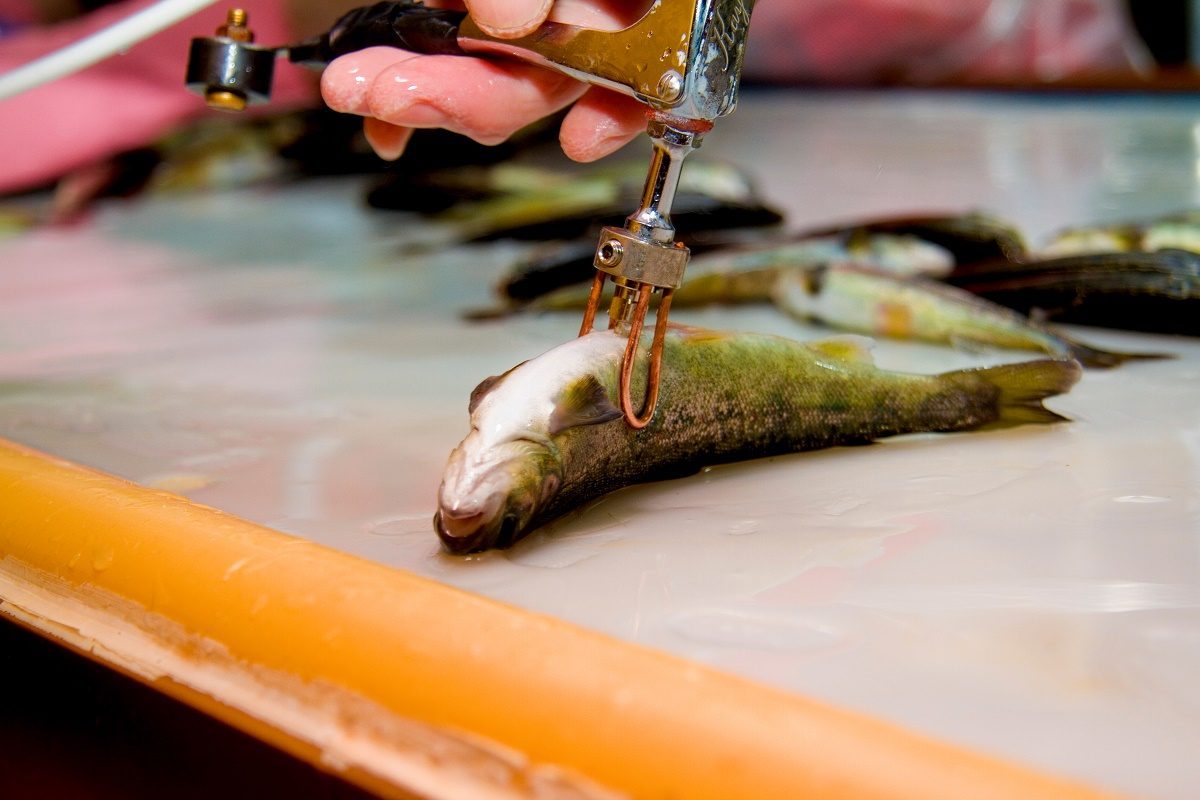Types of Fish Vaccines
There are different types of fish vaccines available depending on the pathogenic bacteria or virus they are designed to protect against. Some of the common fish vaccine types include:
Bacterial vaccines – These vaccines aim to protect fish against various bacterial diseases. Some commonly used bacterial vaccines target diseases such as vibriosis caused by Vibrio anguillarum, furunculosis caused by Aeromonas salmonicida, and enteric redmouth disease caused by Yersinia ruckeri. Bacterial vaccines can either consist of inactivated whole pathogens or specific purified antigens from the pathogenic bacteria.
Viral vaccines – Fish Vaccine farms also have to deal with a variety of viral diseases. Important viral vaccines target infectious hematopoietic necrosis virus (IHNV), infectious pancreatic necrosis (IPN), and viral encephalopathy and retinopathy virus (VERV). Viral vaccines may consist of live attenuated viruses, inactivated viruses, viral subunits or DNA vaccines.
Combination vaccines – To provide broader protection, some fish vaccines contain antigens from multiple pathogenic bacteria or viruses. These combination vaccines aim to protect fish against more than one disease simultaneously.
How Fish Vaccines Work
Fish vaccines work based on the same principles as mammalian vaccines to trigger an adaptive immune response in fish. The key components of fish vaccines include:
Adjuvants – Adjuvants are added to fish vaccines to enhance the immune response. Common adjuvants include mineral oils, bacterial products, and immunostimulating complexes.
Antigens – The antigen is the active immunogenic component of the vaccine that may consist of inactivated or attenuated whole pathogens, purified proteins or DNA/RNA fractions.
Immune response – When fish are vaccinated, the antigens in the vaccine are recognized as foreign by the fish immune system. This leads to activation of both the innate and adaptive arms of immunity. Specific antibodies are produced against the antigens to confer protection. Memory immune cells are also generated for long-term protection.
Herd immunity – If a large percentage of farmed fish population is successfully immunized, it leads to herd or flock immunity offering protection even to unvaccinated fish. This breaks the chain of infection transmission in the aquaculture setting.
Vaccination Procedure in Fish Farms
There are a few important considerations when administering Fish Vaccine on commercial aquaculture farms:
Water temperature – Fish have a more effective immune response at elevated water temperatures ranging from 15-25°C. Farmers often vaccinate during this warmer season.
Fish size – Young fish below a certain size may not respond adequately to vaccines. Most fish vaccines list the minimum recommended size for vaccination.
Mode of delivery – Fish vaccines can be administered by injection, immersion, oral delivery or spray. The route suitable depends on vaccine characteristics as well as ease of handling fish.
Booster doses – Most fish vaccines require at least one booster dose to produce long-term protection. Booster interval ranges from 4-8 weeks usually.
Environmental stress – Fish under stress due to water quality issues may have reduced response to vaccines. Ideal farm management plays a key role.
Record keeping – Detailed documentation of vaccination dates, doses, responding fish population etc. helps evaluate vaccine efficacy and outbreak management.
Advantages of Fish Vaccination
Implementation of routine fish vaccination programs provides multiple benefits to aquaculture industry:
Improved production – By conferring protection against infectious pathogens, vaccines reduce mortality rates leading to higher fish yields and productivity.
Economic gains – Costs associated with disease outbreaks, treatments and production losses are minimized resulting in increased farm profits.
Animal welfare – Vaccination alleviates suffering of farmed fish from clinical infections and disease stress.
Food safety – Use of vaccines reduces dependency on antibiotic and chemotherapeutants enhancing quality and safety of aquaculture products for human consumption.
Environment protection – By curbing disease transmission in aquaculture settings, mass medication of farms is avoided helping maintain ecological balance.
Sustainable aquaculture – Along with good husbandry and management practices, vaccination facilitates sustainable and responsible development of aquatic livestock industry worldwide.
Future of Fish Vaccines
Though the concept of fish vaccination is not new, continuous research efforts are improving existing vaccine candidates and technologies:
– Molecular vaccine designs targeting virulence factors are being developed for new generation vaccines.
– Advancements in immunology and genomics help understand fish immune responses better for rational vaccine design.
– Application of recombinant DNA, RNA, viral vector and DNA vaccine approaches extend possibility of protective antigens.
– Adjuvants mimicking natural ligands enhance magnitude and durability of fish immune responses.
– New delivery methods like oral, immersion and spray vaccines improve ease and efficiency of mass application in aquaculture.
– Development of thermostable and multivalent vaccines widen vaccine availability in different geographies and production systems.
With growing aquaculture sector worldwide, innovative fish vaccines hold promise to effectively mitigate impact of infectious diseases, supporting sustainable growth of aquaculture industry.
*Note:
1. Source: Coherent Market Insights, Public sources, Desk research
2. We have leveraged AI tools to mine information and compile it


